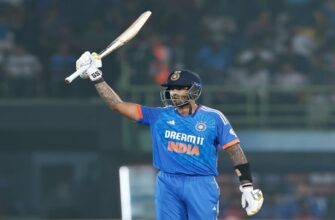Dubai’s gleaming Coca-Cola Arena recently bore witness to a Professional Fighters League (PFL) event of significant magnitude. It was not merely a night of high-stakes combat; it marked the inaugural show for the organization’s new CEO, John Martin, on the ground. The marquee rematch between the highly anticipated Usman Nurmagomedov and Paul Hughes drew an electric crowd of over 10,000 fervent fans, all eager for a definitive conclusion to their burgeoning rivalry. What transpired was an exciting, five-round contest that, by many accounts from the general audience, teetered on the edge, appearing poised to swing either way. However, the subsequent official judging ignited a contentious debate that quickly threatened to overshadow the athletic spectacle itself.
The Scorecard That Launched a Thousand Debates
At the epicenter of the post-fight maelstrom was a specific scorecard submitted by judge Bryan Miner, which controversially awarded all five rounds to Nurmagomedov, culminating in a 50-45 tally. This score, perceived by a significant portion of observers and critics as excessively wide, immediately triggered a torrent of discussion and dismay across the global mixed martial arts community. While Nurmagomedov was ultimately declared the victor, the stark numerical disparity from a single judge raised profound questions about the subjective nature of judging, the consistency of scoring criteria, and the enduring challenge of applying them fairly during such high-pressure, elite-level bouts.
PFL`s New Leader Steps Into the Fray
John Martin, PFL`s recently appointed CEO, found himself navigating a baptism by fire. Unlike many corporate executives, Martin possesses a personal background deeply rooted in martial arts—holding two black belts in karate, a BJJ blue belt, and some light boxing experience. This practical understanding of combat sports lends a unique, practitioner’s perspective to his leadership role. Addressing the media in Dubai, Martin acknowledged the palpable disparity in opinions surrounding the controversial scoring.
“That’s why we have judges and first of all I thought it was a good fight,” Martin stated. “I thought Usman was the better fighter, the dominant fighter, taking down Paul pretty routinely… I’m glad I’m not a judge because talking amongst the people at my table they saw it a bit differently. But I think Usman clearly won the fight tonight.”
Martin’s defense, while firm in upholding Nurmagomedov’s victory, subtly underscored the subjective challenges inherent in scoring combat sports. It is a testament to his experience that he could both affirm the official outcome and, in the same breath, concede the existence of differing, yet potentially valid, interpretations from those “at his table”—an astute observation that validates the public`s confusion while maintaining organizational stance.
The Victor`s Unwavering Conviction
Adding another intriguing layer to the complex post-fight narrative was Usman Nurmagomedov himself. While Paul Hughes, the losing fighter, maintained a notable post-fight silence, Nurmagomedov was anything but reserved in his assessment. Far from being merely satisfied with a 50-45 scorecard, the dominant victor expressed a belief that the judges had, if anything, been too conservative in their estimation of his performance. “Brother, I think that was 50-44, just my opinion,” he confidently asserted, even pinpointing the first round as deserving of a decisive 10-8 score.
This unwavering conviction from the winning fighter, suggesting his dominance was even more pronounced than the most lopsided official scorecard, presents a fascinating psychological element. It highlights the vast chasm that can sometimes exist between a fighter`s deep-seated self-perception of their performance and the external, objective (or ostensibly objective) evaluation, even when the final outcome ultimately favors them. One might almost infer a touch of irony: a fighter arguing that a 50-45 score was, in fact, *too narrow* a victory.
Beyond the Octagon: Implications for PFL and Judging Standards
The Dubai event, meticulously organized to showcase PFL’s burgeoning global expansion and competitive depth, instead inadvertently illuminated the perennial and often frustrating challenges of mixed martial arts judging. For a nascent CEO like John Martin, this immediate and prominent controversy serves as a crucible—an early test of leadership, transparency, and the organization`s commitment to continuous improvement. It squarely forces the PFL to critically examine its judging protocols, the training and oversight of its officials, and the consistency of scorecard application, especially as it vigorously seeks to solidify its position as a premier global fight promotion in a fiercely competitive landscape.
While the PFL asserts that the correct fighter ultimately had his hand raised, the lingering questions and widespread debate about the scoring demonstrate that in combat sports, perception can be as impactful, if not more so, than the literal reality of the final decision. As the PFL continues its journey of global growth and expansion, ensuring that victories are not merely secured but also unequivocally *perceived* as just and fair will be absolutely crucial for its credibility, its fan engagement, and the long-term integrity of the sport it champions.






